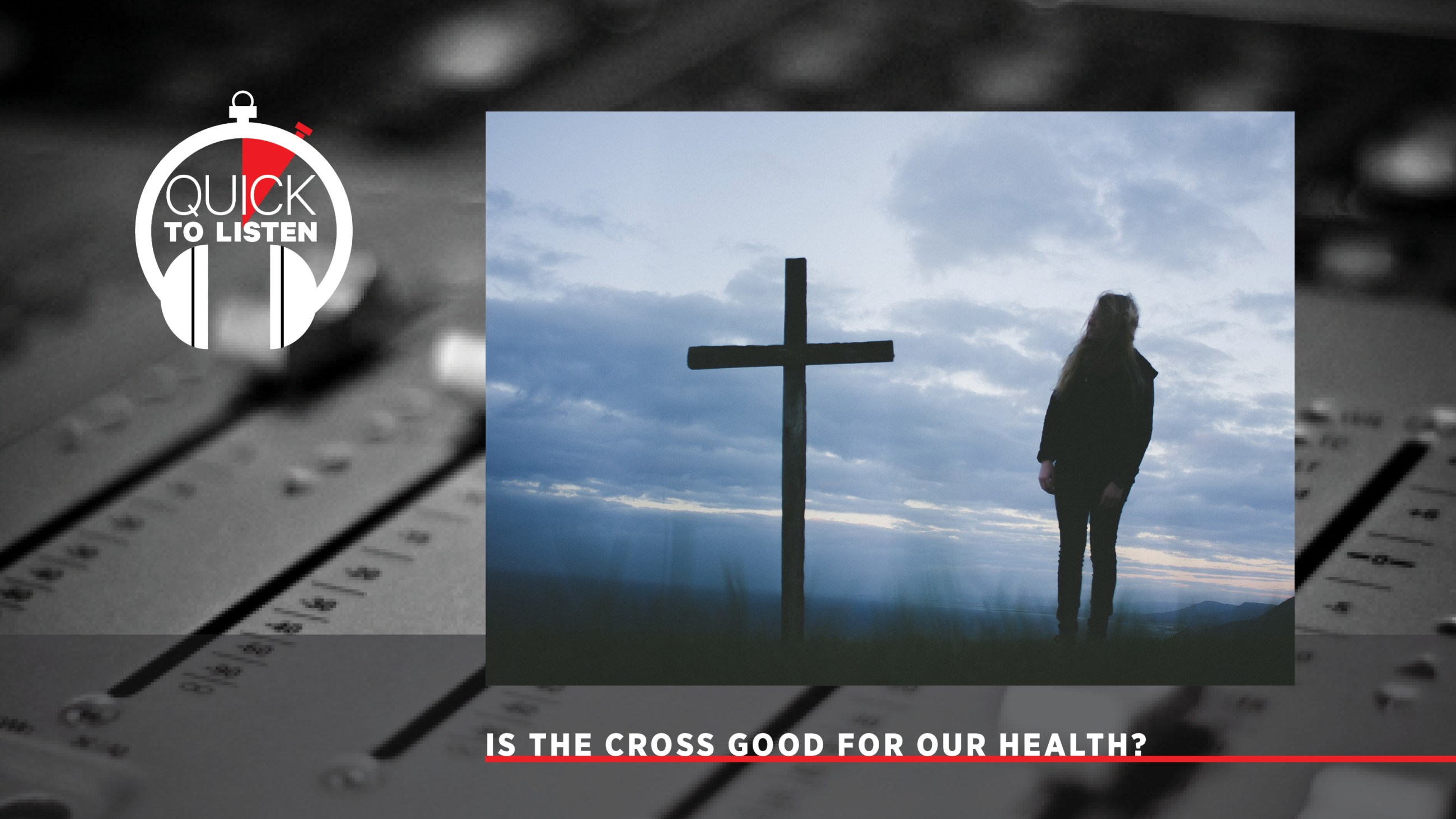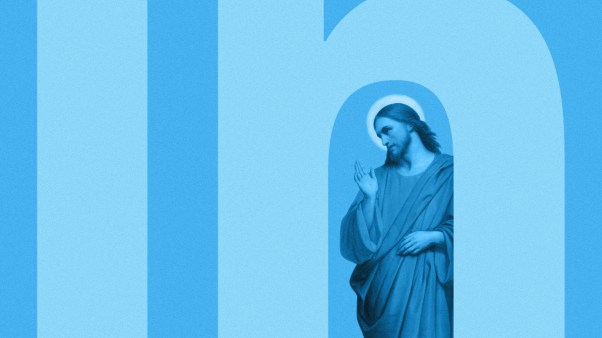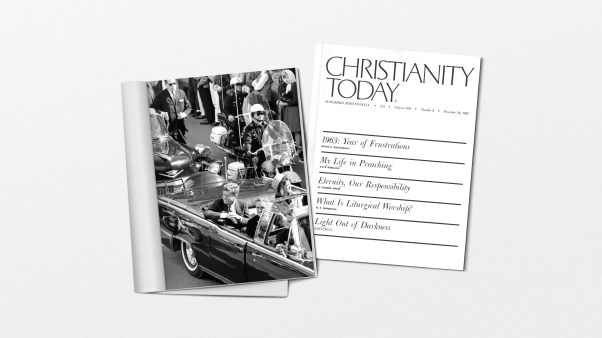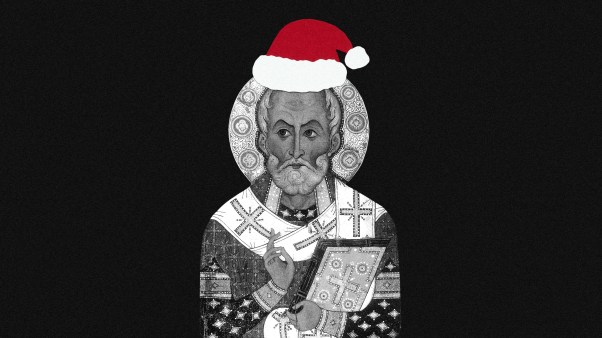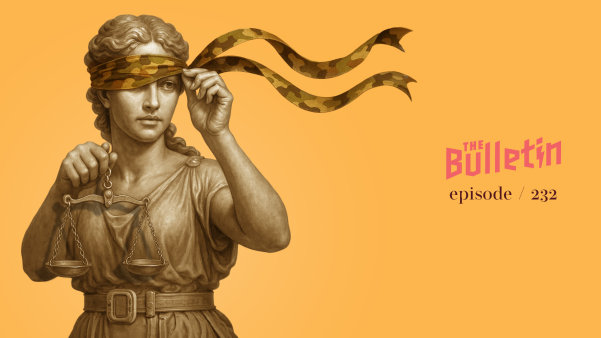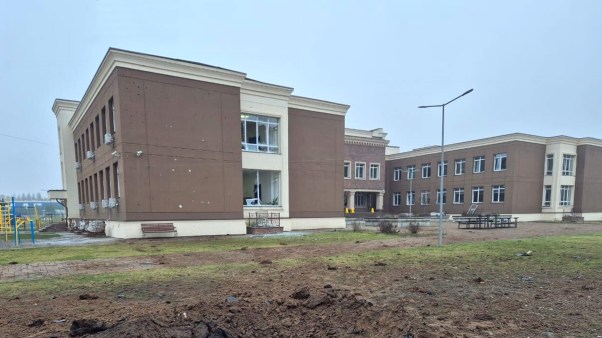This week, Protestants and Catholics around the world will celebrate Easter, once again in the midst of a global pandemic. At least 2.8 million people have died from COVID-19 and while many affluent countries have begun to vaccinate their people in earnest, this illness still defines most of public life.
Because of Lent, many Christians have already been grappling with death in the context of their faith. But this week, the church will be once again sitting with the reality of Jesus’ death and his astonishing resurrection. Of course, for us believers, this astounding turn of events has life-changing ramifications for what comes after our physical deaths. But what does it mean for physical bodies as we inhabit them today? Does the Cross have any meaning for our physical health in this life?
Stephen Ko is senior pastor at New York Chinese Alliance Church and formerly a professor of global health and pediatrics at Boston University and a medical officer at the Centers for Disease Control & Prevention. He is the co-author of the forthcoming All Creation Groans (Wipf & Stock) and the author of the also forthcoming Incarnational Health .
What is Quick to Listen? Read more
Rate Quick to Listen on Apple Podcasts
Follow the podcast on Twitter
Follow our hosts on Twitter: Morgan Lee and Ted Olsen
Follow our guest on Twitter: Steve Ko
Music by Sweeps
Quick to Listen is produced by Morgan Lee and Matt Linder
The transcript is edited by Yvonne Su and Bunmi Ishola
Highlights from Quick to Listen: Episode #258
As someone who is preaching this Easter weekend, what connections are you drawing between the coronavirus and the work of Jesus?
Ko: There’s real power in the Resurrection. In fact, in John 11, Jesus says “I'm the resurrection and the life. And the one who believes in me will live, even though they die, and whoever lives by believing me will never die.” This is an extraordinary statement and it's important to understand not only the death and resurrection of Jesus but how that impacts our lives daily, especially through a pandemic like COVID in the last year.
What is the context when Jesus is making that statement?
Ko: Jesus foretells his death and resurrection at least three times in the Synoptic Gospels. In addition to John, in Matthew 16, Mark 8, and Luke 9, we read from the time Jesus began to show his disciples that He must go to Jerusalem and suffer many things–from the elders, chief priests, and scribes–and be killed. On the third day, He is to be raised.
Initially, during that prediction, Peter immediately rebukes Him. Jesus knows that His sacrifice is necessary for the salvation of humankind, even though Peter and the disciples may be appalled by this prospect.
I love the way CS Lewis paints a beautiful picture of the scene in the line in which Susan and Lucy walked through the woods with their friend, Azlan, only to find out that they're escorting him to be sacrificed at the stone table. A second instance occurs in Matthew 17, Mark 9, and Luke 9 where Jesus says the son of man is about to be delivered into the hands of men and they will kill him. And he will be raised on the third day.
This time, the disciples had just witnessed the glorious transfiguration of Christ while hearing the words of the Father: This is my beloved Son with whom I am well-pleased. I can imagine their confusion believing the kingdom of God is near with such a glorious encounter and for Jesus to reveal His sheer motivation to submit to the will of His father, even when it leads to Calgary.
And then a final time, Jesus predicts his death and resurrection in Matthew 20. In the former Matthew 20, verses 17 through 19, He says the son of man will be delivered over to the chief priests and scribes, and they will condemn him to death and deliver him over to the Gentiles and be mocked, flogged, and crucified. And He'll be raised on the third day.
At that time, Jesus shares His fate with the disciples as they approached Jerusalem, that the Scriptures tell us that they do not understand his words since their meaning is hidden from them. John notably predicts the death of Jesus and His gospel not only in chapter 11 but in chapters 12 and 14. In chapter 12, He says, “Leave her alone so that she may keep it for the day of my burial, for the poor you always have with me. But you do not always have me.”
As Jesus dies on the cross, He drinks the cup of sin for all humanity, as blood departs his arteries and veins. Satan is revealed in the fullness of evil and wickedness, the weight of the world, sin, and the depths of human depravity descend simultaneously upon His body.
In that moment of darkness, we see Jesus for who He is, the Son of God. In His death, we find radical liberation from sin and the sacrifice of Jesus Christ becomes the light of men. It's in His death that we receive life. Yet with the Resurrection, death is not the final answer. It, too, is conquered by Jesus Christ.
The resurrection of Jesus foreshadows the hope of future resurrection for all believers in which our bodies will be made whole, untainted by sin, immune to disease or sickness, and free to worship God for all eternity.
Can you speak to the physicality of suffering around Jesus’s death and his resurrection?
Ko: What strikes me most about the gospel are the scorge of Jesus, the physical weight of the cross, and of course, the act of crucifixion. you know, after Pilate acquiesce to the crowds of wishes, he condemned Jesus to death and ordered Him to be scorched and to inflict great pain by whipping or beating.
In the Roman context, the whip was made of iron balls or sheep bones tied several inches from the end of each leather thong. These extra weights result in severe lacerations, deep bruising, and often tearing of soft tissue and muscle.
In medical school, I accidentally severed the tip of my left middle finger while lifting weights. I vividly recall the immense and throbbing pain in my hand, while others watched in horror as blood spewed all over the gym. The side of my detached finger and concomitant distress were enough for a nearby bystander to faint.
But for Jesus, it was only at the beginning. The physical scorge left him in exquisite pain from mangled skin, flesh, and tissue. The loss of blood likely began to eviscerate His energy while weighing on His body and mental acuity, with His body covered in open wounds. He was then tasked to carry the cross.
Crosses weighed about a hundred pounds in antiquity. I can only imagine having to carry that weight upon my shoulders after a brutal night in prison, being condemned by the mob, and being grotesquely scorged.
Are the details of Jesus’s crucifixion consistent with how the Romans meted punishment?
Ko: I think it was consistent with Roman crucifixion, which in the time was gruesome and humiliating. Seven-inch iron spikes tore through the wrists and attach to the cross beams. Since they could not support His weight, Jesus' feet were then nailed to the vertical beam. With a crown of thorns, He was also losing blood from the scalp.
I've seen many individuals dying in the hospital from severe trauma and unsustainable blood loss. It's never easy to witness. Jesus likely died from a combination of trauma and in His weakened state, He needed to take shallow breaths while gasping for air until He could breathe no more.
These gruesome details of the crucifixion are repulsive to our senses and objectionable to our minds, yet they're necessary to provide a deeper appreciation for the remarkable sacrifice of the Cross. They spur a deep sense of gratitude and thanksgiving, especially on Good Friday. We remember in part because the Crucifixion is etched in our memories.
What connection do you see between the loss of breath from COVID and Jesus being the one who breathed life into us and also having the breath squeezed out of Him?
Ko: Theologically, breath has different meanings in the Hebrew and Greek. The breath from the Hebrew is hovering over the world at creation. This aspect of the Greek, pneuma, or spirit, pervades through the New Testament.
The breath of life is a gift of God that we all receive in the fullness of time, not only at birth when we are born. Parents are often afraid to hear the frailty of cries of babies, but as a pediatrician, I'm looking for that cry because what it means is that the breath of life is alive and well, that the lungs are working within a baby. Pneuma, that breath from the Holy Spirit, gives us the power of resurrection and allows us to live sanctified lives.
How did you start to read the account of the Crucifixion differently when you entered the medical field?
Ko: I want to start by defining miracle. Merriam-Webster defines it as an extraordinary event, manifesting divine intervention in human affairs. CS Lewis explains it as something unique that breaks a pattern so accepted and established, we hardly consider the possibility that it could be broken.
Eric Metaxas says it is when something outside time and space enters time and space, whether to wink at us or poke at us briefly or to come in and dwell among us for three decades. In light of these definitions, it's so fitting to me that Jesus carries the scars from the crucifixion in his resurrected body.
Visible–the pierced hands and puncture wounds–signs confirm to the faithful that the miracle of resurrection is real. Jesus demonstrates that the same body, which bore the shame of crucifixion, stands alive before the disciples. Interestingly enough, the Greek word for resurrection is Anastasis, which means to stand again.
By prevailing over flesh, there is continuity in life, death, and resurrection. Through it, we marvel at the manifestation of the divine within the Resurrection. Healing occurs sometimes through prayer, but sometimes it's through miracles. If you watch the movie Contagion, you probably would have laughed to see that by the end of the movie, a vaccination was developed in record time, yet that's the reality of how COVID vaccinations were developed and disseminated within a year of a disease being diagnosed. That’s a modern miracle of medicine and science.
Jesus’s resurrected body bears wounds. There are different types of wounds – psychological and physical – and therefore, different resurrection stories. What does that mean for us as believers?
Ko: Some would wonder why scars are visible in Christ, glorified body. I've often wondered, Are they not a sign of evil, depravity, and sin? As I recall, Augustine offers the following: in that kingdom, we shall see on the bodies of the martyrs, the traces of the wounds, which they bore for Christ's name. It will not be a deformity, but dignity in them.
A certain kind of beauty will shine in them. They're not of the body. Certainly, we can go to the passages on resurrection and what our resurrected bodies will look like. I would take Augustine's view that we will carry some of these scars and they will be a sign of dignity rather than deformity.
Are there things about death that we should expect to change us before our ultimate resurrection?
Ko: We must first look at the theology of disease and illness. The forthcoming book, All Creation Groans is a collection of authors that are elucidating a theology of illness and healing beginning from Creation. I had a chance to pen the chapter on public health approaches to disease and editor Daniel Neal characterized historical, contemporary, and globalized theologies of disease.
The patristics believe that demons were among many causes of disease, but they extol this virtual benefit of illness: seeing God. , not as an author, but one who permits disease Gregory of Nazianzus sums up the patristic view by saying do not admire every form of health, but do not condemn every illness either.
Later, Martin Luther recognized the pervasive power of Satan and his demons. He promoted the power of Christ over evil while advocating individual engagement towards liberation. For him, the contribution of illness towards refinement was apparent. Afflictions, when sanctified, make us grateful for mercies, which before we treated with indifference.
In contrast, John Calvin de-emphasized demonic influence within disease causation. He focused on divine will and the spiritual value of suffering within the saints. His durable teaching on God's Providence among others would arguably lead to the development of modern medicine.
Suffering could have a purifying effect by awakening our compassion towards others. The ultimate restoration is not necessarily good physical health on earth but includes fitting ourselves into the context of the Creator's world. The power of the resurrection allows this to occur. There's general agreement that the work of atonement heals us from the curse of sin. Paul etches this on our minds in Romans 6:23: for the wages of sin are death, but the gift of God is eternal life in Christ Jesus. We're reminded that different categories of sin do exist, whether celestial, original, individual, generational, or systemic.
In Romans 8, Paul builds an argument for the effects of sin, that the Creation was subjected to frustration by the will of the One who subjected it and hope. And though subjection to frustration can be seen as discouragement, there's hope beyond measure. The body is dead because of sin, but the spirit is life because of righteousness.
The book I'm working on is about incarnational health and the extra-biblical meaning of incarnation denotes the hypostatic union between divinity and humanity. Therefore, incarnational health decisions allow us to identify with the life, death, and resurrection of Jesus while embodying that, which we believe as Christians, ultimately with the Resurrection, our resurrected bodies will not be subject to disease, illness, or aging.
The resurrection of Jesus ensures that. But what about the healing of present illness within our daily lives? Diseases are destructive and even sinister. The world has experienced COVID-19 for many months and it can be invasive and crippling, isolating, undignified, and even fatal for some.
I believe that the answer lies in the incarnation of Christ. He spent the majority of His times with sinners, tax collectors, and the sick. He healed the blind, the lame, the mute, the bleeding, and the demon-possessed. Jesus tells us in Luke 5:31, “Those who are well have no need of a physician, but those who are sick. I have not come to call the righteous, but sinners to repent and see through miracle signs and wonders.” Christ demonstrated hope for physical healing in this lifetime. But the true hope of glory is beyond our earth and vessels. In 2 Samuel 14, the wise woman sums up this reality to King David.
We're like water spilled on the ground, which cannot be gathered up again.
When your congregants are sick, do you talk about the gift of sanctification or do you pray strictly for physical healing?
Ko: Throughout the centuries, the church has always practiced divine healing. It began in the New Testament. Paul mentions healing as among spiritual gifts in that first letter to the Corinthians.
During the Reformation, some preachers such as Martin Luther believed, taught, and practiced divine healing. Among Methodists, Anglican John Wesley's incorporation of medical practices was standard for pastors. Wesley advocated for exercise, hygiene, and a healthy diet, all essential for good health and preventive medicine.
On the other hand, his brother, Charles, incorporated healing and many of his beloved hymns. As to John Wesley's doctrine of sanctification, it was one of the most important beliefs but often misunderstood today. He describes the experience of sanctification in terms of a crisis and as an experience that's not instantaneous.
In 1881, AB Simpson heard the message of divine healing from Charles Cullis at a summer faith conference. Upon praying for supernatural healing, God healed both his heart and a disease of his nervous system. He would then become the father of the Christian and Missionary Alliance. Divine healing is the third part of Alliance's fourfold gospel: Christ as savior, Christ as sanctifier, Christ as healer, and Christ as coming king.
I lean into healing whether it is spiritual healing, physical healing, or mental healing just as Jesus did throughout His earthly ministry.
How do you pray for people who are sick? Where do you get the language in those prayers?
Ko: We all need healing personally, collectively, and globally, especially in 2020 and 2021. God meets us in our grief and the desolation of isolation, Jesus heals our brokenness.
He had compassion on the crowns and crowds and He has mercy on us. Just as He healed every disease and affliction during His earthly ministry, Jesus desires to heal every sickness and infirmity affecting us. How do we experience the healing touch of Jesus? James instructs us to confess our sins, to pray in faith, to call the elders, and anoint the sick with oil in the name of the Lord.
The power of healing comes from Jesus alone for He was pierced for our transgressions, crushed for our iniquities, and by His wounds were healed. We pray for healing for the sake of the gospel, for the glory of the risen King. Healing, whether physical, mental, or spiritual, is always meant to point towards Christ.
The only reason I want to be healed is because I want to bring You glory. If something else brings you more glory, that's okay with me. For, it's not about me. It's about Jesus.
Do you have a moment when you have prayed with someone at church or as a doctor that you’d like to share?
Ko: While working one night in the pediatric ICU, there's a teenage girl who was born without a functional left side of the heart returning from a minor surgical procedure. She had just endured multiple complex surgeries throughout her life. Each allowed her to live, to laugh, and to love. The hindrance of suffering likely cultivated a polite, courteous nature, yet also a sense of humor.
After rounding on my patients that evening, I noticed an increasingly pale complexion in her skin. Her capillary refill was delayed and her countenance was increasingly subdued. We gave her a transfusion of blood and watched life slowly returned to her body. But after the transfusion, her blood pressure began to drop precipitously.
She turned white as a ghost while her hands and feet were cold and clammy; cardiogenic shock was setting. Something had gone terribly wrong with her surgical procedure. I called the cardiothoracic surgeons but feared that it would be too late. As we injected numerous life-saving drugs to sustain her, my heart races.
Surely, she was bleeding out from her surgical site. After what seemed like days, the heart surgeons finally arrived, but without time to transfer her to the operating room, they reopened her chest in the middle of that ICU. You could see her heart beating inside her chest wall.
Though I felt a sense of impending doom, I said a prayer at that moment asking God to heal this young girl. Despite the grimmest of hope, she survived the bleeding, the risk of infection outside the sterile environment of an operating room, and open-heart surgery in the middle of an ICU. As I think back on that day, it was truly an extraordinary event manifesting divine intervention.
I only believed it because I saw it, but in retrospect, it was nothing compared to the miracle of Resurrection. Because in that extraordinary act lies the promise of Revelation 21:4, that one day He will wipe away every tear from their eyes and death shall be no more. Neither shall there be mourning nor crying, nor pain anymore for the former things have passed away.
That's the hope of healing and the hope of Easter.

